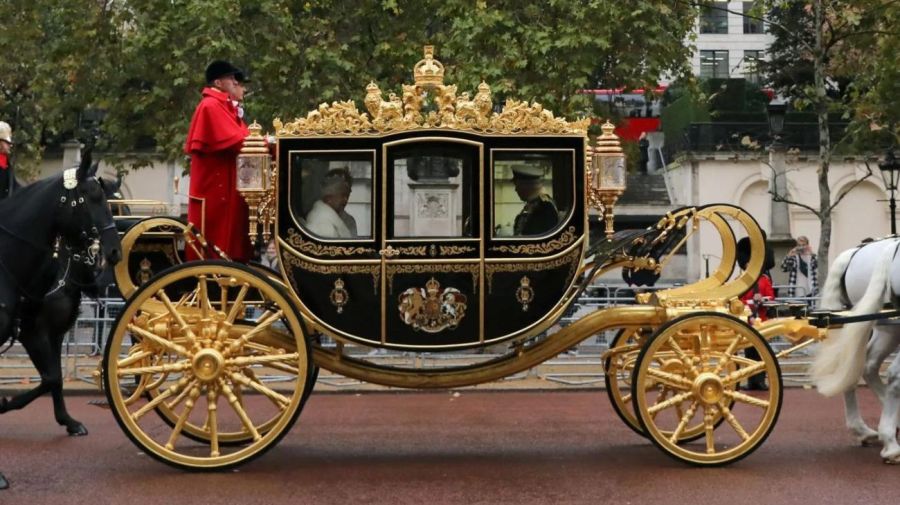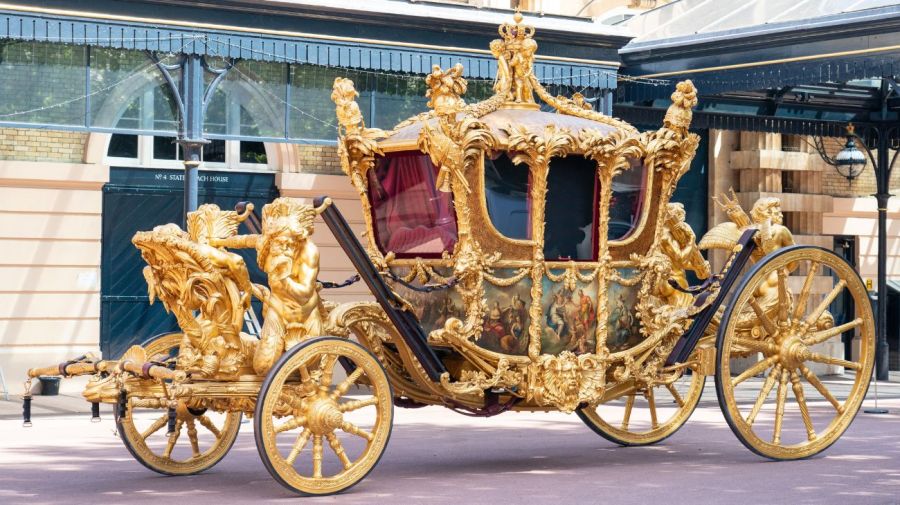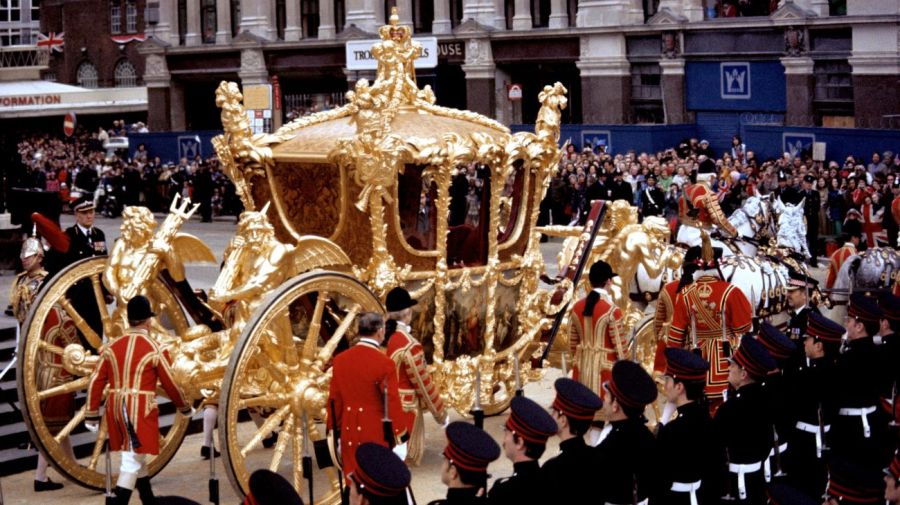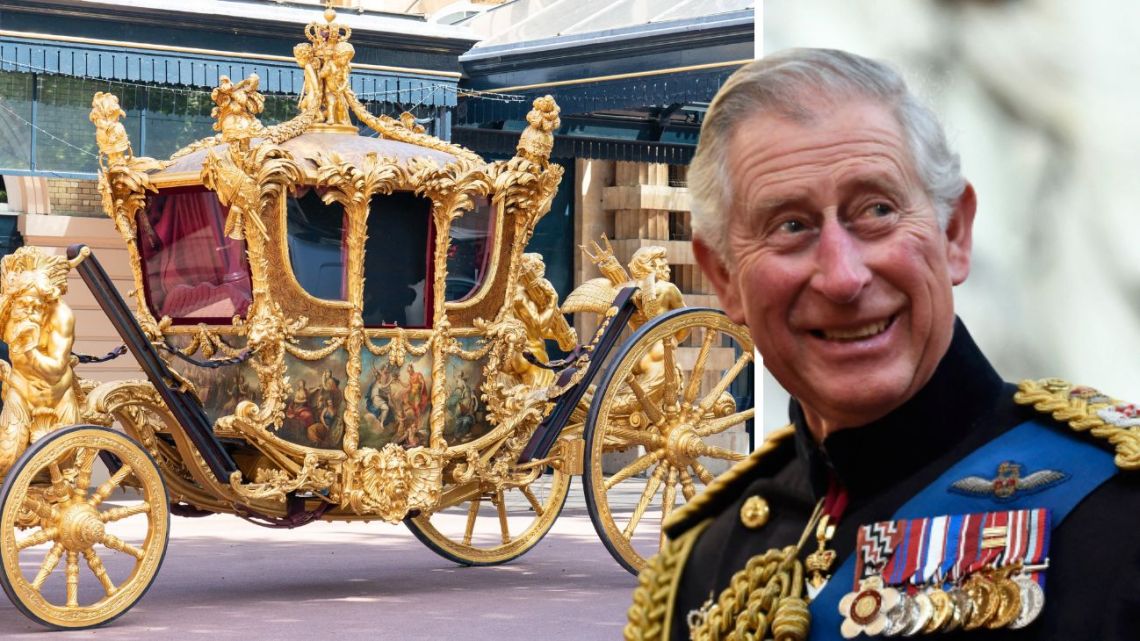The new from Britain, Carlos III, and Queen Camilla will be able to enjoy a comfortable trip towards their coronation next May 6 in a state-of-the-art carriage, with air conditioning and electric windows.
In this way they will not have to endure a “horrible” trip back in the “Gold State Coach“(Golden Carriage) used for almost three centuries by British monarchs for their coronation.
Coronation of Carlos III and Camilla: the frantic preparations, the royal jewels and the guests
The coronation of Carlos and Camilla will have two processions of carriages and soldiers: the ‘The King’s Procession’ will be the monarchs’ journey from Buckingham Palace to Westminster Abbey aboard the “Diamond Jubilee State Coach” (Diamond Jubilee State Carriage).
the second trip, the ‘Coronation Procession’, will cover the reverse route from the abbey to the palacealthough it will include the iconic Trafalgar Square in London, aboard the Golden Carriage.
The King’s Procession: the modern “Diamond Jubilee State Coach”
Built in Australia, the newest addition to the royal carriage collection weighs three tons and features six-fold hydraulic suspension, heating system, lighting, electric windows and air conditioning.
He “Diamond Jubilee State Coach” (Diamond Anniversary State Carriage), equipped with all kinds of comforts: six hydraulic stabilizers that prevent its aluminum body from swaying, electric windows, heating and air conditioning.
The carriage, created in 2014 for the celebration of the 60th anniversary of the reign of Isabel II, is painted black and bears the coat of arms of the royal family above the door.
Responsible for the supervision, administration and maintenance of the carriages is the “Royal Collection Trust”, the royal foundation that deals with the private collection of art, including paintings, photographs, tapestries, furniture, armor, books and even plants.

According to it, the carriage, made in Australia, It is 5 meters long and weighs 3 tons.. It features a chamber in the golden crown on the roof, so the royal couple’s journey can be accurately documented.
Its interior is splendid: the handrails of the seats are from the old Yate Real Britannia and also contains fragments of Henry VIII’s warship Mary Rose, Sir Isaac Newton’s apple tree and Captain Scott’s and Sir Ernest Shackleton’s Antarctic bases on its bodywork.
Wood from royal residences such as Buckingham Palace, Kensington Palace and Windsor Castle, as well as the Tower of London, Althorp House -the ancestral home of Diana Spencer’s family- and the Prime Minister’s house on Downing Street also form part of the carriage
During the King’s Procession Heading to Westminster Abbey 200 members of the Sovereign’s Escort on horseback that will escort the monarchs.
The Coronation Procession: a less comfortable return trip

The state carriage is not as imposing as the golden royal carriage (“Gold State Coach”), 18th centuryin which the late Queen Elizabeth II went 70 years ago from the palace to the westminster abbey to be crowned
The queen even used a hot water bottle because it was a typical summer day in Britain: it was rainy and cold. Six decades later, The monarch confessed in an interview that traveling in the golden carriage was “horrible”probably because the vehicle was suspended with leather straps and had no springs.
Photogallery: the imposing Westminster Abbey, the “theater” of the coronation of Charles III
The carriage, which It does not have windows with electric windows, nor heating or dampingwas completed in 1762, is seven meters long and weighs 4 tons, one more than the diamond carriage, and requires eight horses to pull it instead of six.
The beautiful carriage is made of wood, with a layer of gold leaf painted on top. It has painted panels Roman gods and goddesses, while three cherubs on the ceiling symbolize England, Scotland and Ireland.

The inside of the Gold State Coach it is just as impressive, with upholstered seats covered in the finest velvet and satin, fit for a king and queen.
It was King William IV, who used it for the first time in his coronation procession in 1831. He likened the trip to “being on board a ship that is rocking in a rough sea”, something that has little to do with a fairy tale.
Queen Victoria, crowned in 1838, complained of the “distressing wobble” of the golden carriage and stopped using it entirely after the death of her husband, Albert. And although it was detested by successive generations, the following kings used the unbearable carriage in their coronations.

Camilla’s recycled crown: with Elizabeth II’s diamonds but without the “damn” Koh-i-Noor
Breaking tradition, Carlos III will not go to his coronation in the golden carriage, agreeing only to use it when leaving, invested with the royal crown, scepter and orb. The British royal house did not want to explain why the king decided to make this change, but it assumes that greater comfort was the reason.
Martin Oates, carriage restorer at the Royal Stables, will walk behind the carriage in the coronation procession and will act as the “brake man” by pulling the manual T-bar at the back to secure it in place when you come to a stop.
“When you’re following it, you can hear it creak, so sounds like an old galleon advancingOates said, instead defining the State Carriage as “a much more modern vehicle, much like a car”.
The largest military parade in seven decades

The military parade back to the palace will be “twice the size” of Queen Elizabeth II’s funeral, so big that it will fill the iconic The Mall avenue and, when the king arrives at the palace, the funeral procession will still be 2 kms away.
The procession will include Armed Forces from across the Commonwealth and British Overseas Territories, and all UK Armed Forces Services, along with the Sovereign’s Bodyguard and Royal Watermen.
Sergeant Major Vern Stokes anticipated that all military personnel participating in the parade “will be aware” of any possible disruption or threat to security. “Everybody knows exactly how they’re legally allowed to react to any of those,” he said.
The coronation of Carlos III and Camilla: the “meritocratic” guest list, key presences and curious absences
The brigade commander of the Household Division, Lieutenant Colonel James Shaw, will lead the procession on horseback some 1,500 meters in front of the state carriage that will take the King and Queen back to the palace. He anticipated that the parade would double the size of Elizabeth II’s funeral procession.
“I don’t like to compare anything to a funeral because one person or a million people wouldn’t have made a difference in how special it was,” he said. “But it’s twice the size of the funeral and it’s about triple the size of the Jubilee parade.”

Sergeant Major Stokes revealed that the Queen’s funeral, last September, served as a “rehearsal” for this coronation: “We were able to learn lessons from what we did and insert more time if necessary or conduct more rehearsals.”
Speaking about planning the parade, Stoker said it was “very funny“In the first few months, or the first few weeks, the two of us sat down with a whiteboard with a few others and we were sketching ideas, taking bits of historical parades putting together and thinking about, hopefully, what will be an amazing event.”
How much will the coronation of Carlos III cost? The British don’t want to pay the bill
“We didn’t have a set plan to follow. For the London Bridge operation – that is, the Queen’s funeral – there was a written plan.” For the coronation of Carlos III there was no “written plan, but we have a historical precedent that we can extract from previous parades,” he said.
According to plans, more than 6,000 members of the British armed forces will take part in the parade, marking the largest military ceremonial operation in 70 years. Some 4,000 sailors, soldiers, airmen and other military personnel from across the UK and Commonwealth They will escort the kings back to the palace. More than 1,000 members of the military, air force and navy will line the procession route.
ds
You may also like
